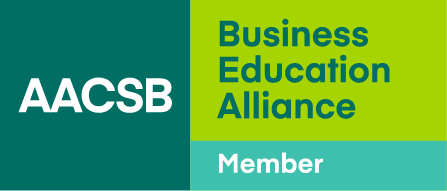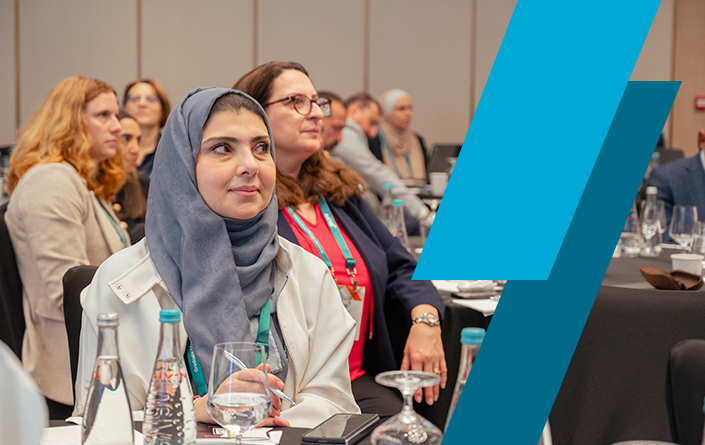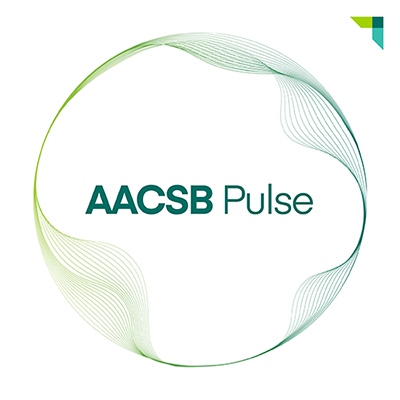Keeping Curricula Fresh in an Era of Rapid Change
- Academic administrators from schools in France, Spain, and Thailand highlight how their schools are adapting to technological disruption, geopolitical shifts, demographic changes, and broader societal upheaval.
- In particular, they argued that in response to the rise of artificial intelligence, business schools must abandon static models of education to embrace continuous curricular evolution.
- They also stressed that strong connections to industry partners, alumni, and regional ecosystems are critical if schools are to align curricula with real-world needs and anticipate future trends.
It can be tempting to think that it’s perception, not reality, that makes it seem as if change is happening at a faster pace than ever before. But current research quickly dispels any doubt that disruptions are emerging more quickly than in the past. Just consider the following:
- Accenture’s 2024 Pulse of Change Index, which analyzes 40 data series from sources such as the Organisation for Economic Co-operation and Development and the International Monetary Fund, found the global rate of change has increased 183 percent since 2019. Technological disruption is now the leading factor for that change in business.
- Ninety percent of the world’s data was generated in the last two years.
- The time required for major innovations to emerge has compressed dramatically. It took millions of years for humans to master fire, but only 66 years to go from the world’s first flight to landing on the moon!
In this rapidly changing context, how can business schools keep their curricula up to date, equip students with relevant skills, and meet the needs of employers as those needs evolve?
I recently sat down with three business school professionals to discuss how their schools were positioning their programs—and their faculty—to stay agile as the world transforms around them. They included Ian Fenwick, the director of Sasin School of Management in Thailand; Stephanie Villemagne, the chief development officer at ESSCA School of Management in Angers, France; and Katharine D’Amico, the academic director of the Executive MBA Online at UPF Barcelona School of Management.
Throughout the discussion, all three pointed to factors that have become all too familiar to business school leaders—from social upheaval to demographic shifts to, of course, artificial intelligence (AI). Below I share our conversation, in which the panel members all agreed: Just as businesses are compelled to evolve in response to these forces, business schools must accelerate their ability to adapt to disruptions as they arise—and anticipate those that lie ahead.
Roe: Great to speak to you all. AI is the obvious trend that everyone is talking about, but what are the other major trends that are informing the development of curricula at your schools?
Villemagne: Well, AI is definitely the headline act, but honestly, it’s the adaptation to AI and all this rapid technological change that’s really shaking things up. Business schools are grappling not just with new tools, but with how society and humanity itself are evolving right now. Geopolitical changes are huge, too—things like the rise of the East in the global economy, trade wars, and general uncertainty are all having a big impact. So, it’s not just about technology; it’s about how we, as people and communities, adapt and move forward in this new world.
Fenwick: I agree. While AI is a major focus, at Sasin we also integrate themes like ESG [environment, social, and governance], demographic shifts, geopolitical complexity, and mindfulness into our curriculum planning. Our aim is to develop not just AI-savvy professionals, but mindful, sustainability-conscious leaders who can harness emerging technologies responsibly.
D’Amico: Beyond AI, the shift toward hybrid work and project-based organizations is redefining what it means to lead and collaborate, demanding a focus on adaptability, autonomy, and emotional intelligence. As traditional roles disappear, skills like critical thinking, communication, and resilience are becoming core competencies.
At the same time, growing attention to mental health and neurodiversity is pushing us to design learning environments that are more inclusive and trust-based. Sustainability is a fundamental lens through which value creation must be reimagined. Additionally, the rise of Gen Z, along with increasing polarization and a widespread crisis of trust, calls for a new kind of leadership—one grounded in authenticity, ethical judgment, and the ability to navigate complexity with empathy and clarity.
Roe: Do your experiences bear out the various data that the pace of change is quicker than ever?
D’Amico: Yes! The changes we’re seeing are not only faster, but they’re also fundamentally different. Unlike past shifts driven by industrialization or globalization, today’s transformation is exponential, interconnected, and deeply personal, disrupting long-established norms. What makes this moment unique is the convergence of multiple forces, all reinforcing one another in real time. We’re not just adapting to a new system. We’re building it as it emerges.
Fenwick: The changes we are seeing that are reshaping industries, careers, and societal norms are at a speed that previous generations did not experience. In our region of Southeast Asia, the rise of digital economies and new business models is particularly noticeable. The region is rapidly becoming a key player for tomorrow's world.
Villemagne: I agree with all of that. People talked about a revolution in the early 2000s, but what’s happening now is the real revolution. Things are moving so quickly that it’s hard for business schools (and everyone else) to keep up. Honestly, I don't think we're living in some kind of normal anymore—the world has genuinely changed and not always for the better.
Roe: With that in mind, what role do external partners and students play to ensure curricula reflect current and future business and societal needs?
Villemagne: For any business school, I think it is a question of being at the heart of your regional or national ecosystem. Practically, that means being in regular contact with alumni, companies, students, parents, and faculty. Ideally, it’s a virtuous circle—everyone feeds into keeping the curriculum fresh and relevant.
At ESSCA, we have a multi-campus model, so in opening any new campus we are careful to look at the local business ecosystem and tailor our programs to fit. For example, there is a specialism on cybersecurity in our new campus in Malaga, Spain, which is a focus of that particular city. And students, although not always the best at telling what is best for them, are of course absolutely crucial: Their experiences and suggestions are a vital part of how we decide what to change or add.
D’Amico: As Stephanie mentions, your ecosystem is critical. At UPF Barcelona School of Management, we actively engage with a diverse ecosystem to ensure our curriculum stays closely aligned with both current realities and future needs in business and society. External partners include innovation hubs, accelerators, and leading startups—particularly in biotech, medtech, and healthtech. This gives us real-time insights into emerging technologies, investment trends, and entrepreneurial challenges.
Through partnerships with corporate players and public institutions, we gain visibility into shifting workforce dynamics, such as hybrid work structures, new skill demands, and organizational transformation. Our advisory boards include industry leaders, policymakers, and academic researchers, ensuring that we integrate cutting-edge thinking on sustainability, neurodiversity, digital sovereignty, and ethical leadership. These partnerships help us anticipate change rather than simply react to it.
Fenwick: It’s certainly about anticipating future trends and issues. Our external partners include global academic institutions, accreditation bodies, corporate partners, industry leaders, government organizations, and our alumni businesses both globally and regionally in Southeast Asia. We put a particular focus on case studies and research to further strengthen the practical application of our programs.
Our students and alumni recently pointed to the prevalence of family enterprises within the Sasin community and indeed within the regional economy. This led us to create the Asian Family Enterprise and Entrepreneurship Center, which is developing our curricula, funding research, and establishing advisory services. Student feedback also pointed to the dearth of contemporary case studies dealing with this region, leading us to launch the Sasin Asian Case Creation Center.
Roe: How often should schools update their curricula?
Fenwick: Honestly, it’s a constant process. For example, this year we introduced two new core courses. The first, Creative Transformation and Generative Thinking for Tomorrow’s Managers, looks at the broad problems and challenges of AI for managers, including ethical and transformational issues. This will serve as a precursor for our existing AI applications courses. Our second course is ESG for 21st Century Business, which offers an overview of ESG topics and their role in corporate decision-making. Ideally, all courses should undergo annual maintenance and renewal, with some being deleted and new courses being added.
D’Amico: Echoing Ian’s thoughts, curricula should be reviewed and updated annually, with additional revisions driven by accreditation cycles and strategic innovation projects. Curricula should be seen as constantly evolving—our mission is not just to prepare executives to tackle change, but to lead it.
Villemagne: Constant is the right word. There’s something happening every year. New electives, practical workshops, and tweaks are constantly being added to keep up with what students and organizations need.
Roe: How do you integrate emerging fields like AI and data analytics into your programs?
D’Amico: We ensure they are fully integrated into shaping how students learn strategy, operations, finance, and leadership. We have a strategic plan for the whole school around AI, including in our governance, academic programs, management processes, and corporate partnerships. It also forms part of skills development and lifelong learning for current students and alumni. My view is that you must look at AI across all your activities.
Villemagne: Practically, for any new subject, electives can be a great way of introducing content. That happens pretty much every year. Especially from the third year onward and in our master’s programs, you’ll see a lot of new tech and topics popping up. We also partner with other schools, such as engineering and scientific schools, to help students gain business, management, and technical knowledge. The ability to bridge the gap between technology and business understanding is becoming one of the critical skills that employers are looking for.
As examples, we have a Master in Management and Business Engineering, developed with Dassault Systèmes and IBM. We also have partnerships with major French engineering schools, such as the one with CentraleSupélec for ESSCA students who want to take the Master of Science in Technology and Management.
Fenwick: We have introduced an AI-oriented option in our hands-on Action Learning Lab, offered with partner schools around the world, including MIT, Tsinghua, and Fudan. This allows students to work in groups on real business problems—advising corporates on AI adoption frameworks and developing an AI competitiveness index, amongst other projects. Our aim is to ensure our students are not only fluent in emerging technologies but also prepared to lead responsibly in an AI-driven world.
Roe: We have touched on research, but I’d be interested in understanding what strategies you use to bridge the gap between theoretical knowledge and practical application in curriculum development?
D’Amico: At UPF, we have an Innovation Curriculum R&D Lab within the school to scout frontier trends globally; test pilot programs, short courses, and edtech formats; and function like a VC arm for internal academic experiments. In our Executive MBA, for example, each course is designed around real business challenges, often co-developed with practitioners, and students are constantly encouraged to test concepts in their own professional environments.
Villemagne: At ESSCA, we also place a big emphasis on practical workshops and real-world projects alongside academic rigor. Electives and industry collaborations are key, so students get hands-on experience in parallel with their academic studies. Fundamentally, it’s all about making sure what they learn works in practice. I am a great believer that academia can learn a lot from business and vice versa. When you get it right, it is a very powerful combination.
Fenwick: We use action learning a lot, where students tackle real-world business challenges with corporate partners. We also integrate guest lectures and industry/alumni projects to provide practical insights and ensure students can apply their knowledge in real business environments. Our MBA students are required to complete at least one Action Learning Lab, such as the Consulting Lab, the Sustainability Lab, or the AI Lab.
Roe: What are the regionally specific challenges and opportunities you face that influence the development of your curriculum?
Villemagne: Right now, in France, and indeed across Europe, it’s a tough, competitive business education environment. Schools are hesitant to take risks because things are so uncertain socially, politically, and economically. But at the same time, there’s a huge opportunity if we are willing to be bold and adapt quickly. European schools can step up and show global leadership in what they teach, as well as in their research and partnerships with business.
Globally, various forces are shaking up the business education sector, changing the parts of the world where students want to study, and opening up opportunities for non-business-school competitors, particularly digital providers.
D’Amico: Barcelona is at a crossroads of innovation, culture, tech, and global connectivity. In that, we find both sharp challenges and powerful opportunities. The local economy is rapidly evolving, with growing pressure on companies to digitalize, attract international talent, and lead in sustainability.
At the same time, the city’s startup ecosystem, strong research institutions, and reputation as a hub for design and social innovation offer fertile ground for experimentation and entrepreneurial thinking. Challenges like talent gaps, hybrid work integration, and generational shifts in leadership expectations are driving changes in our curriculum.
Fenwick: In Thailand, we face the challenges of rapid digital transformation and the urgent need for sustainability and ESG. In addition, as the fastest aging country in Southeast Asia, Thailand is on the front lines of demographic disruption. We see this in the increasing appeal of part-time programs, in our growing executive education (nondegree) programs, and in the number of alumni returning to take courses as part of our Lifelong Learning Program.
Roe: That is fascinating. As a final question, how do you measure the effectiveness of your curriculum in terms of preparing students for the job market?
D’Amico: We use real-time feedback from students and alumni to fine-tune content and ensure the program delivers not just knowledge, but readiness—the ability to lead, adapt, and thrive in business. Graduate employability, career progression, and employer feedback are all key indicators.
Fenwick: The proof of the cake must be in the eating! Over 90 percent of our graduates are employed—or developing their own startups—within 90 days of graduation.
Villemagne: As Ian notes, there are various metrics in employability, including employment three months after graduation. But more importantly, we look at the number behind whether alumni are happy with the companies that employ them. We ask, are your expectations met by your employer? For us, currently that figure is around 86 percent. It’s important that when you go to a business school, it’s not just to get a job, but to do something that you enjoy doing and investing in your continued development.
Roe: This has been a great discussion. Many thanks to you all for your thoughts.







 “We’re not just adapting to a new system. We’re building it as it emerges.”—Katharine D’Amico, UPF Barcelona School of Management
“We’re not just adapting to a new system. We’re building it as it emerges.”—Katharine D’Amico, UPF Barcelona School of Management 
